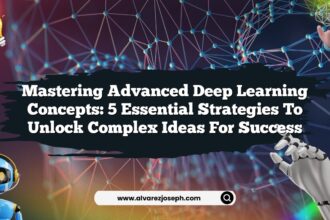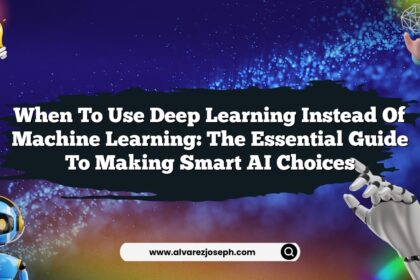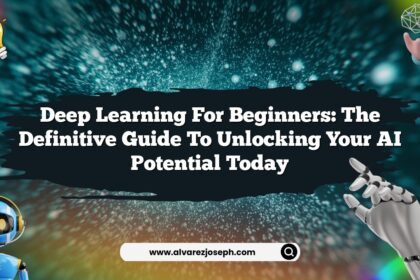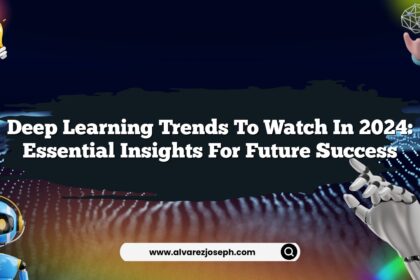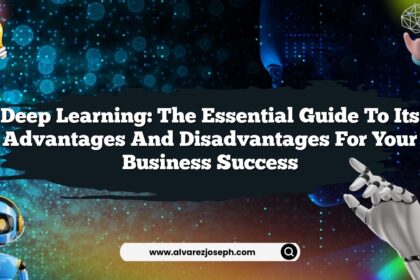Deep learning is a powerhouse of artificial intelligence that has transformed numerous industries, from healthcare to finance, and its extraordinary capabilities require equally robust computing power. Enter the Graphics Processing Unit (GPU), the unsung hero of deep learning tasks. The right GPU can elevate your model training from days to mere hours. But how exactly does it do that? What’s the secret sauce behind these silicon marvels? Buckle up, because we’re about to dive deep into the world of GPUs and their pivotal role in accelerating deep learning tasks.
Imagine you’re a chef trying to whip up a five-course meal for a banquet. If you’re doing it alone, it could take hours, right? Now, imagine bringing in a whole team of sous chefs, each equipped with specialized tools to speed up the process. This is essentially what a GPU does for deep learning. It distributes the heavy workload across its many cores, allowing tasks to be processed simultaneously. You start to see why GPUs are the preferred choice for data scientists and AI researchers. But don’t worry; we’ll unpack this all step by step.
The Basics of GPU Architecture
To fully appreciate the power of a GPU, we need to understand what makes it tick. Unlike traditional CPUs, which are designed to handle a limited number of tasks quickly, GPUs are built for parallel processing. This means they can handle thousands of tasks simultaneously, making them ideal for the matrix and vector operations that are the backbone of deep learning.
CUDA: The Secret Weapon
One of the pivotal technologies behind GPU performance is CUDA (Compute Unified Device Architecture). Developed by NVIDIA, CUDA allows developers to leverage the power of GPUs for general-purpose computing. With CUDA, you can write programs in C, C++, or Python that directly interact with the GPU, maximizing computational efficiency.
Think of CUDA as a translator that helps your deep learning applications communicate with the GPU. It allows your models to take full advantage of the parallel processing capabilities of the GPU, dramatically speeding up computations compared to CPUs.
Why GPUs Excel in Deep Learning
1. Parallel Processing Power
The first reason GPUs outshine CPUs for deep learning lies in their parallel processing power. Traditional CPUs typically have a few cores (usually between 4 to 16), whereas GPUs can have thousands. This means they can perform multiple calculations at once. For instance, training a neural network involves numerous matrix multiplications, and GPUs can handle these operations simultaneously, drastically reducing training time.
2. Memory Bandwidth
Memory bandwidth is another crucial factor. GPUs have higher memory bandwidth compared to CPUs, meaning they can read and write large amounts of data much faster. This is particularly critical in deep learning, where massive datasets are commonplace.
3. Optimized for Tensor Operations
Deep learning heavily relies on tensor operations—multidimensional arrays that are fundamental in deep learning architectures. GPUs are specifically designed to excel at these operations, making them the go-to choice for training complex models.
Types of GPUs for Deep Learning
Not all GPUs are created equal. When it comes to deep learning, there are several options you can choose from, depending on your needs and budget.
Consumer GPUs
NVIDIA GeForce and AMD Radeon are common choices for enthusiasts and gamers. While they can handle deep learning tasks, they may not be as efficient as professional-grade GPUs. However, for those just starting, they can provide a cost-effective entry point.
Data Center GPUs
For serious work, consider data center GPUs such as the NVIDIA Tesla series. These are designed specifically for heavy computational tasks and large datasets. With features like ECC memory and superior cooling solutions, they are built to run continuously and handle the demands of deep learning workloads.
Specialized GPUs
NVIDIA also offers specialized GPUs like the NVIDIA A100 and NVIDIA V100, geared towards AI research. They provide Tensor Cores specifically for faster deep learning training and inference, making them a popular choice among researchers and enterprises.
Choosing the Right GPU for Your Deep Learning Needs
Choosing the right GPU can feel like navigating through a maze, but here are some key considerations:
- Budget: Determine how much you’re willing to invest. High-end GPUs can be pricey, but there are budget options that still pack a punch.
- Use Case: Are you training complex models or doing basic experimentation? Your needs will dictate the GPU.
- Memory: Look for GPUs with sufficient memory (VRAM). Deep learning models can be memory-hungry, especially with large datasets.
- Ecosystem Compatibility: Ensure compatibility with your software stack. NVIDIA’s CUDA ecosystem is widely supported, but be sure to check compatibility with your preferred frameworks.
Popular Frameworks That Leverage GPU Power
Many deep learning frameworks have built-in support for GPUs, which means you can train your models more efficiently. Here are some of the heavyweights in the field:
- TensorFlow: Developed by Google, TensorFlow has extensive support for GPU acceleration, making it a top choice for many data scientists.
- PyTorch: This framework has gained popularity for its dynamic computation graph and ease of use. PyTorch also supports CUDA, ensuring that GPU acceleration is a breeze.
- Keras: A high-level neural networks API, Keras can run on top of TensorFlow and also benefits from GPU acceleration.
Real-World Applications of GPUs in Deep Learning
You might be wondering, “Okay, but where are the GPUs actually making a difference?” Let’s explore some real-world applications where GPUs have become game-changers.
Healthcare
In the medical field, GPUs are used for tasks like medical imaging and genomics. For instance, they can analyze MRI scans at lightning speed, helping doctors make quicker, more accurate diagnoses. Imagine a world where a patient receives critical care faster—thanks to a GPU’s computational prowess.
Autonomous Vehicles
Self-driving cars rely on deep learning for object detection, lane detection, and decision-making. GPUs process vast amounts of data from sensors and cameras, enabling vehicles to navigate complex environments in real-time. The future of transportation doesn’t just depend on software; it hinges on powerful hardware.
Finance
In finance, GPUs accelerate risk analysis and fraud detection. Trading algorithms that once took hours to evaluate can now be processed in minutes, allowing firms to capitalize on trends faster than ever. This is where financial institutions can gain a competitive edge.
Challenges of Using GPUs for Deep Learning
While GPUs offer immense advantages, they’re not without challenges. Here are a few hurdles you might encounter:
Cost
High-end GPUs can be quite pricey, and building a machine with multiple GPUs can escalate costs quickly. If you’re working on a tight budget, you might need to explore cloud computing options, which can provide access to powerful GPUs without the upfront cost.
Complexity
Setting up and optimizing GPU configurations can be complex. You’ll need to understand how to manage dependencies, optimize your code, and troubleshoot issues. For newcomers, this can feel overwhelming, but many resources are available to help.
Power Consumption and Cooling
High-performance GPUs consume significant power and generate heat. Proper cooling solutions are essential for maintaining optimal performance. Otherwise, you might find your GPU throttling its performance or, even worse, shutting down unexpectedly.
The Future of GPUs in Deep Learning
As technology evolves, so does the role of GPUs in deep learning. The emergence of GPUs with AI capabilities is on the horizon. These GPUs will not only accelerate existing tasks but will also introduce new functionalities, enabling machines to learn and adapt on the fly. Imagine a future where your AI is not just fast but also smart enough to make decisions based on its previous experiences.
In addition to this, advancements in quantum computing could shake up the landscape entirely. While we’re not there yet, it’s exciting to think about how these technologies could intertwine. But more on that later…
Quick Summary
- GPUs are essential for accelerating deep learning tasks due to their parallel processing power.
- CUDA technology enables developers to maximize GPU capabilities for deep learning models.
- GPUs outperform CPUs in deep learning due to higher memory bandwidth and optimization for tensor operations.
- Different types of GPUs cater to varying deep learning needs, from consumer-grade to specialized data center GPUs.
- Popular frameworks like TensorFlow and PyTorch leverage GPU power for efficient model training.
- Real-world applications of GPUs include healthcare, autonomous vehicles, and finance.
- Challenges of using GPUs include high costs, complexity in setup, and power consumption.
- The future of GPUs in deep learning looks promising, with advancements in AI capabilities on the horizon.
- Understanding your needs will help you choose the right GPU for your deep learning projects.
- Continuous evolution in technology will shape how we utilize GPUs in the future.
Frequently Asked Questions
What is a GPU, and how is it different from a CPU?
A GPU, or Graphics Processing Unit, is designed for parallel processing, making it highly effective for tasks that require simultaneous calculations. In contrast, a CPU (Central Processing Unit) is optimized for sequential tasks and has fewer cores.
Can I use a gaming GPU for deep learning?
Yes, gaming GPUs can handle deep learning tasks, but they may not be as efficient as professional-grade GPUs designed specifically for computation-heavy workloads.
How much memory do I need for a GPU used in deep learning?
The amount of memory (VRAM) you need depends on your specific tasks and datasets. Generally, 8GB is a good starting point, but larger datasets may require 16GB or more.
Are there cloud options for accessing GPUs?
Absolutely! Many cloud providers, like AWS and Google Cloud, offer GPU instances, allowing you to access powerful hardware without the need for physical equipment.
What are Tensor Cores?
Tensor Cores are specialized hardware components in NVIDIA’s GPUs that accelerate tensor operations, making deep learning tasks even faster.
How can I optimize my deep learning model on a GPU?
You can optimize your models by leveraging frameworks that support GPU acceleration, using efficient data pipelines, and fine-tuning hyperparameters.
So there you have it! The world of GPUs in deep learning isn’t just fascinating; it’s a game-changer. With the right tools, the possibilities are endless. Curious about how to implement these insights into your own work? It’s time to unleash that powerful performance!




